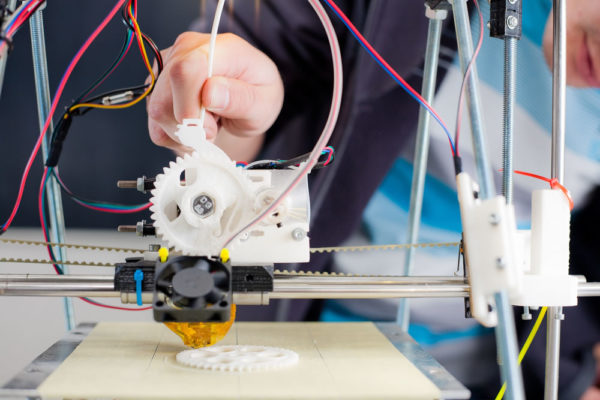Remember the original iMac G3 desktop computers with their sleek, translucent designs in a colorful collection? Likely you saw these computers in ads, store windows or even owned one yourself. Millennials might also recall seeing these systems introduced to classrooms during elementary school, and that’s because Apple made a massive push in penetrating the education market throughout the ‘90s by exposing millions of children to this product.
Though to a lesser scale and profile than Apple, there is a similar technology immersion taking place today with 3D printing education. Companies like Ultimaker and more are all working to bring 3D printers to classrooms across the country. This growing accessibility is due largely to open source formats that support collaboration along with more affordable, yet still professional-grade desktop options. High-quality 3D printers are no longer just massive bulky units with price tags in the tens of thousands. That’s why from primary to higher education, the benefits of getting 3D printing into the hands of students are numerous.
Below, let’s take a closer look at why.
1. Fostering Group Learning and Teamwork
While some jobs might be more isolated than others, teamwork is almost always an essential component of any position regardless of the company. The ability to effectively work and communicate with others is something educators develop early on for students through cooperative assignments—which helps explain all those group projects growing up.
New technologies, especially when introduced at early ages, can capture imagination and inspire learning together. 3D printing a given design requires going through multiple iterations before arriving at a working form, which gives students the chance to learn firsthand about identifying flaws in preceding versions to make the necessary adjustments for success. As makers, students can embark on an explorative journey filled with trial and error to stimulate creativity by turning ideas into tangible objects.
Not only does 3D printing invoke a modern-day learning experience, but it also prepares students for accomplishing more real-world business goals as a collective team.
(Next page: 3D printing for digital-savvy citizens; the fun of learning)
2. Preparing Technology-Savvy Digital Citizens
3D printing blends together use of CAD software and printer hardware, giving students broad technological exposure. Plus, the technology can be applied to a range of subject areas too across both hard and social sciences. Students of all ages and of all genders can get excited about 3D printing in the classroom whether their interests and skills are more mathematical, scientific or artistic.
In today’s digitally diverse business environments, students can go beyond books and chalkboards to additionally gain hands-on learning experience with a technology shaping current and future industries. 3D printing also appeals to the propensities of digital natives, as next-gen printers help create a seamless introduction for the next generation.
Within higher education, the applications of 3D printing can be even more practical with entire courses structured around gaining a mastery of this technology. While majors like engineering, architecture, computer and software design and biomedical technology all nicely parallel 3D printing, there are some schools that even offer full degrees in 3D printing design. This kind of direct training can give a comprehensive understanding of 3D printing and develop highly sought-after graduates who will be best equipped to excel in a variety of industries.
Turning Learning into Fun
Almost everyone can recall those school assignments growing up that were genuinely exciting to work on for class. Now imagine adding the latest in design and production technology to those types of projects.
Building 3D-printed parts adds not only a practical approach to STEM, but a fun one as well. The creative possibilities that 3D printing unlocks are limited only by imagination. Take De Singelier for instance, an elementary school in the Netherlands, which 3D printed bottle rockets as part of their educational program—see for yourself here. Engagement is essential for making learning more enjoyable and accessible, and 3D printing is among the invaluable catalysts for sparking inspiration in young minds.
The future is bright for 3D printing in education, with more educators adopting this technology as a primary channel for learning. By promoting collaborative, modern and entertaining education methods, expect 3D printing to become a mainstay of many more classrooms over time. Access to this technology will undoubtedly translate to more enlightened, intellectually curious students with impressive workforce readiness for years to come.
- 5 digital resources to inspire curiosity and engage students - April 30, 2024
- Critical steps to help school districts combat ransomware attacks - April 30, 2024
- Empowering girls with STEM education to build tomorrow’s tech industry - April 29, 2024

